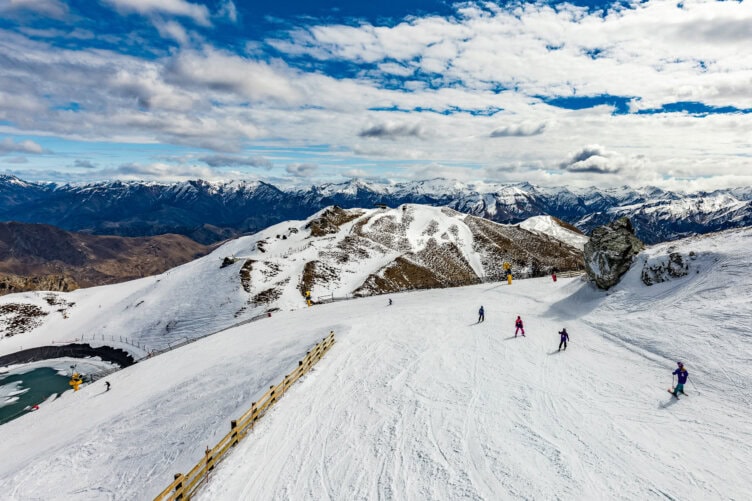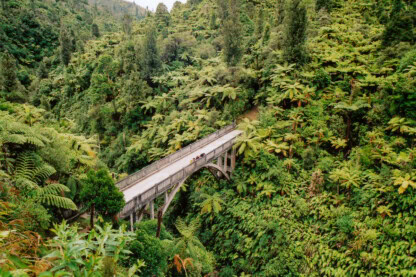
NEW ZEALAND
The Best Time to Visit New Zealand
When is the Best Season to Travel to New Zealand?
From the South Island’s soaring Southern Alps to the North Island’s subtropical northern tip, New Zealand’s sheer geographical diversity and range of climates makes it an incredible destination any time of year. This unique and beautiful nation is roughly the length of the West Coast of the United States, with the North Island hub of Auckland sitting at approximately the same equatorial distance as San Francisco, and South Island’s Queenstown the Southern Hemisphere’s answer to Seattle.
In general, the peak summer months, from December to February, are when most travelers visit. Expect daytime temperatures in the 60s and long days of sunshine across both islands. In addition, the shoulder months of November and March offer just as much idyllic weather and fewer crowds. The November to December period, in particular, brings the best of both worlds: snow-capped high mountains, lush landscapes, and ideal hiking conditions.


NEW ZEALAND in the Spring: September, october & November
Why Visit New Zealand in the Spring?
After the snowmelt and cold snaps, spring ushers in clear skies and warmer temperatures, averaging the high 60s in South Island and the low 60s in the North Island, though nights can fall to the low 40s.
What to Expect on Our Spring Tours
We kick off our season in November, arguably the best time to visit, when consistently sunny days, fewer travelers, and young wildlife abound. It’s also when the country’s dramatic landscapes are blanketed in wildflowers, from white lilies across high-alpine areas to violet lupins along valleys (see: Hiker’s Journey to New Zealand). In addition to the lush landscapes, it’s still possible to experience a wintery wonderland, especially at high-altitude national parks like Mount Aspiring (see: New Zealand: Ultimate South Island).

new zealand in the Summer: december, january & February
Why Visit New Zealand in the Summer?
Most of our trips fall during New Zealand’s summer (December through February), when you’ll experience ideal hiking weather, with daytime temperatures in the high 60s across both islands. Expect long, sunny days with sunsets as late as 10pm, offering plenty of time for exploration.
What to Expect on Our Summer Tours
The start of summer coincides with the most festive time of year in New Zealand (Christmas!) as well as the country’s marquee events, including the Marlborough Food and Wine Festival and the Rugby Sevens in Wellington. It’s also a good time for wildlife-spotting and whale watching, such as spotting orcas hunting for stingrays in Hauraki Gulf (see: Auckland and the Islands of the Hauraki Gulf Extension).

NEW ZEALAND in the Fall: march, april & may
Why Visit New Zealand in the Fall?
Many of our itineraries continue into March, when the weather is a bit more variable, but the payoff is worthwhile: Expect crisp days that continue to hover in the 60s, landscapes shrouded in fall foliage, and fewer visitors.
What to Expect on Our Fall Tours
During New Zealand’s autumn (March through May), daytime temperatures on both islands remain in the high 60s, while nights can dip into the low 40s. In addition to ideal hiking conditions, the summer warmth retained by the ocean makes for pleasant swimming and kayaking, especially around the crystal-clear waters of Poor Knights Islands marine reserve off the Tutukaka Coast (see: New Zealand: Hidden Treasures of the Far North) and Abel Tasman National Park (see: New Zealand: Ultimate South Island).

NEW ZEALAND in the WINTER: June, July & August
Why Visit New Zealand in the Winter?
Frequent rainstorms across the North Island and snow in the South Island often make remote areas and mountain passes difficult to navigate, so WT doesn’t run trips during New Zealand’s winter months. But for snow buffs, it’s a great time to visit, with excellent skiing across the South Island and plenty of resorts a short drive from Queenstown.
Each season brings its own unique wildlife-spotting and whale-watching opportunities, with sperm whales and orca sightings possible year-round, and migratory species like blue and humpback whales passing New Zealand in the winter.






